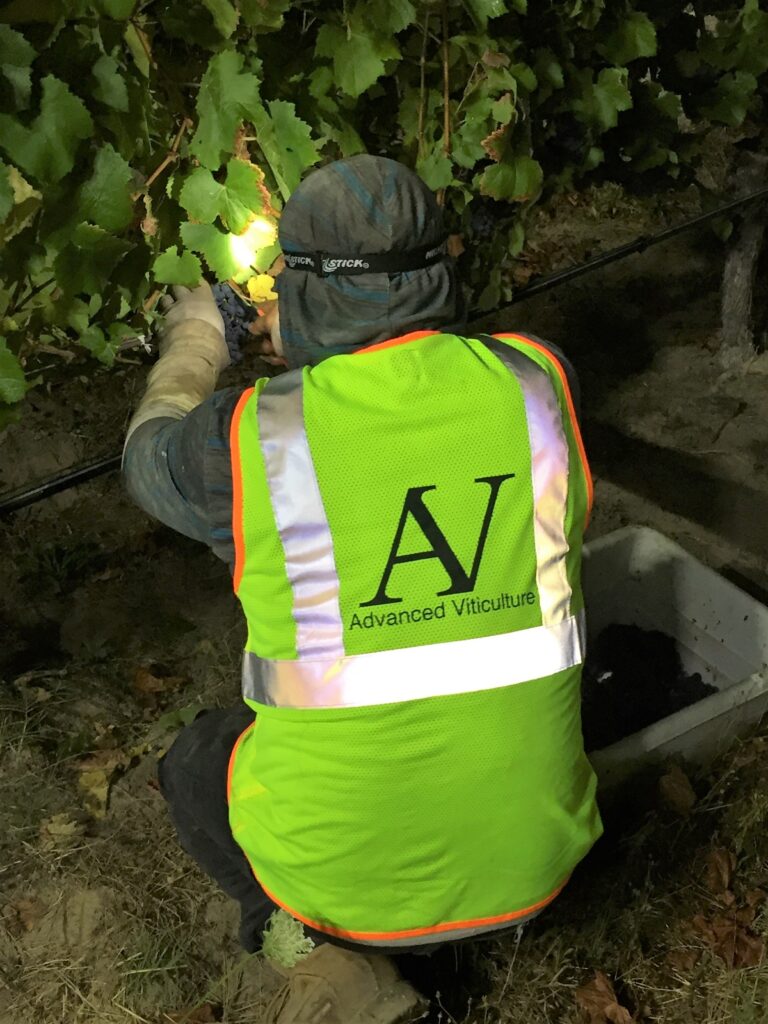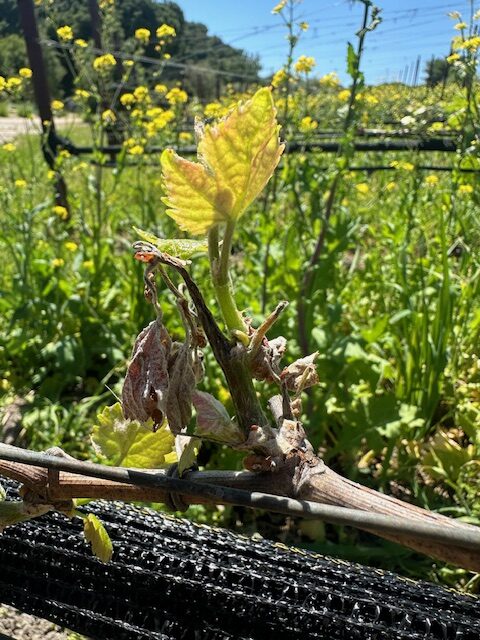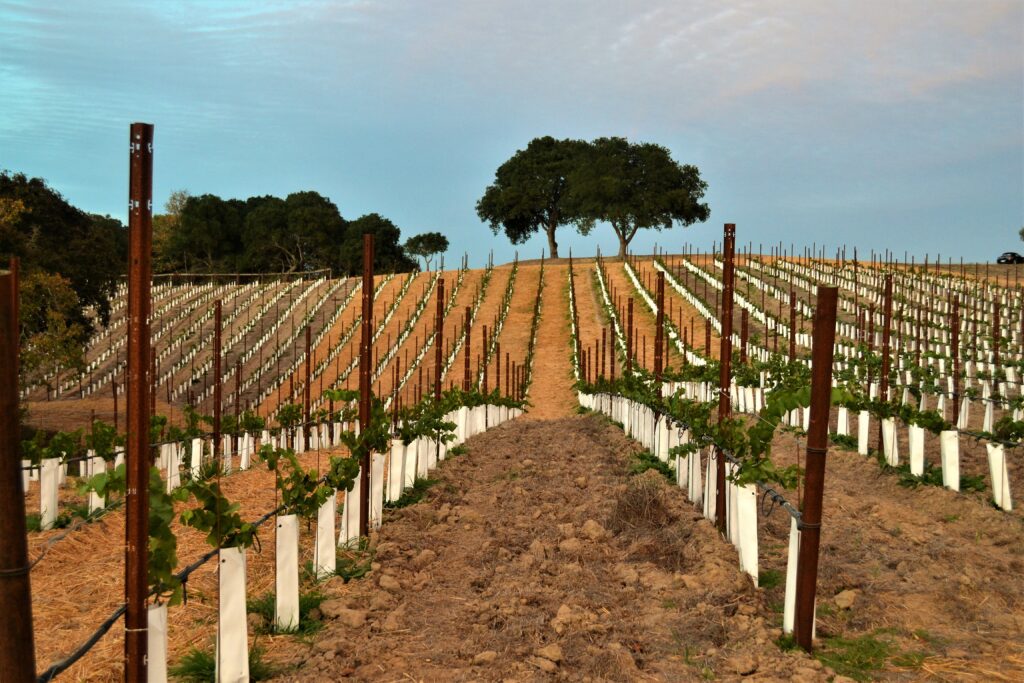How to hedge your losses
I had an macroeconomics professor preface the start of the semester stating that any question asked in his class was answerable with “it depends”…or “China”. While I don’t remember a ton about that class or the intricacies of U.S. tariff policy towards Chinese manufacturing, I find that at least the former part of that statement applies to frost season.
In this case, how you handle your frost damage depends on a few factors. How hard did you get hit? When did the damage occur? What are your winemaking goals? Let’s start with this last one.
What wine is this going into?
Frost damage always looks like Armageddon the morning after. Give it a month though, and it may look not much different than normal. You may even get just as big a crop as you would have if no frost had occurred. This is because the vine is resilient and pushes a lot of secondary and tertiary buds to make up for your burned-up primary bud.
Whatever fruit you have from these later shoots is going to develop later than your original fruit on surviving canes. In terms of sugar, the grapes will most likely catch up (at least here in California) since sugar accumulation reaches a plateau around 24 brix, more or less and then the berry hangs in there without additional sugar. After that any gains in brix are due to dehydration rather than grape metabolism. If sugar and yield are your principal concern, a mild frost event isn’t as big a deal as your overactive mind is making it.
There’s a lot more to wine quality than just sugar of course. Phenolic and aromatic maturity are untethered from sugar accumulation. In the case of a frost damaged block where half the fruit-supporting shoots emerged two weeks later than the other half, this discrepancy will be noticeable. You can’t very well tell a crew to pick only ripe fruit in the middle of the night, so if you’re a high-end winemaker who meticulously chooses a picking date based on all the data, you’re better off dropping the fruit from either the secondary growth or the primary growth. This will at least leave the block uniform.

Catch a tiger by the toe
Do I choose the survivors or the second wave of growth? As a physiology refresh, a dormant grapevine bud is a compound bud composed of a large primary and a secondary and often a tertiary bud. The primary is usually the first that pops off and in the case of a frost event, is the one that gets smoked. This bud is usually the most fruitful, but by no means the “best”. The fruit produced from secondary and tertiary bud may be smaller but will end up giving you high-quality wine just the same. In fact, given that these buds essentially break bud a couple weeks later may be beneficial if you want a later harvest date or even better weather during fruit set.
In this case, what you get rid of depends on preserving yield. Some varieties and clones have limited or no fertility on their non-primary shoots. A few weeks after the second round of growth breaks bud, you should see how many inflorescences the new canopy will give you. This will give you a preliminary idea of which generation you want to keep.
The time to actually eliminate unwanted fruit is green-drop (beginning of veraison). If you want to keep your primary crop, drop the green fruit. If you want to go with your later (secondary) crop, drop the pink clusters. If you eliminate fruit before the green drop stage, you’re likely to have bigger berries than if you had waited. That said, dropping fruit during lag phase won’t create bigger berries, but at that stage, the two sets of fruit are difficult to tell apart. Late in the season, approaching veraison, the berry has reached its final size and the risk of big berries has passed. Dropping fruit any later than green drop stage however, and you risk not being able to identify second growth fruit from primary growth fruit.

Beware recovering laterals! Frost doesn’t always burn up the whole shoot. Often the shoot tip gets fried since it is the most susceptible tissue. This leaves the primary shoot without its apical meristem and as a result, the surviving shoot pushes its lateral buds and grows from there. While grapes from the secondary and tertiary bud are fine and may be just as plentiful as that coming from the primary, you don’t want fruit from any lateral buds. This fruit will usually be much later and of lower quality.
A truncated primary shoot that is sending off laterals will prevent the secondary buds from pushing. In these cases, it is best to eliminate the damaged primary shoot as soon as possible and wait for another bud on the position to push. This is especially important if your vines are spur-pruned and you intend to use that shoot as a spur next year. The damaged primary will be permanently girdled and will never recover enough to give healthy shoots in the future.

What if it’s a total loss?
Maybe you got hit late in the season. Or you have a baby block that got roasted. Before a vine starts producing full-sized leaves that can photosynthesize, all of the energy needed to grow comes from stored carbohydrates in the plant’s woody tissue. If all that energy went to waste when frost took out your canopy, there may not be enough in the tank to start all over again to produce a normal canopy.
In these cases, the best you can do is get off on the right foot next year. That means ensuring you have a long enough cane to lay down or a girthy enough spur. Skinny weak wood begets skinny weak shoots.
Start by assessing your vines’ vigor. Eliminate any doubles or suckers. On spurs, keep the shoot in the lowest shoot position and eliminate the shoot on top. Nitrogen fertilization will help the remaining shoots grow. You may even want to consider a foliar application of nitrogen as that will have a more immediate effect and is easier to piggyback on top of your spray schedule in mid to late spring.

It’s worth noting that this is not a one-size-fits-all solution. If frost hit what is already a vigorous area (which is common since vines at the bottom of the hill are typically the most vigorous and the most frost-susceptible), you may not want to reduce your shoot number. This will cause the remaining shoots to go nuts. Overly-vigorous “bull canes” are rarely fertile and are not good candidates for fruiting canes or spurs.
Young blocks are an easy target for frost since they are so low to the ground. They also have significantly fewer stored carbohydrates and a smaller root system to support starting over. The best thing to do in this case is to allow then to grow for a short time and then eliminate all but one shoot for training up the stake and fertilize with small amounts, frequently. Make sure the area around them is well weeded to avoid added competition for your little guys.
Conclusion
Frost is just one of the myriad things we get to deal with in agriculture. It’s good to assess the actual type of damage, asses your goals first and then act accordingly to make the best of a bad situation.


